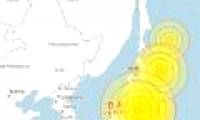
A 6.8-magnitude earthquake has just happened on the northeast coast of Japan, right in the double disaster area in March, causing a tsunami warning to be made.
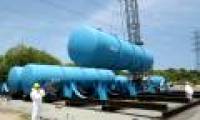
New materials in the form of silicon dioxide compounds (SiO2) can absorb radioactive iodine and strontium by changing the compound type.
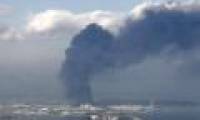
A magnitude 5.6 earthquake struck the Pacific Ocean early this morning, near the area once destroyed by seismic and tsunami in Japan.

An explosion occurred at Japan's Fukushima I nuclear power plant complex, however the level of radiation did not increase as no one was injured.

The International Atomic Energy Agency (IAEA) has concluded that Japan has overlooked the risk of tsunami in the design and operation of the Fukushima I. nuclear power plant.

The Japanese government and Tokyo Electric Power Company (Tepco) have just announced a new roadmap for troubleshooting at the Fukushima I nuclear power plant, on the same day

Japan admits to hiding part of the information about the spread of radioactivity at the Fukushima I nuclear power plant because of fears that it will cause panic among the public,

Most nuclear reactors in Japan will not achieve stable conditions in case all operating power sources are lost or cut off, even if managers have prepared new backup power sources.

Information from the Ministry of Science and Technology confirmed that radioactive isotope concentrations in rainwater in Vietnam have decreased to almost negligible levels.

Two remote-controlled robots are measuring radioactive concentrations in Japan's Fukushima I nuclear power plant.
 A 6.8-magnitude earthquake has just happened on the northeast coast of Japan, right in the double disaster area in March, causing a tsunami warning to be made.
A 6.8-magnitude earthquake has just happened on the northeast coast of Japan, right in the double disaster area in March, causing a tsunami warning to be made. New materials in the form of silicon dioxide compounds (SiO2) can absorb radioactive iodine and strontium by changing the compound type.
New materials in the form of silicon dioxide compounds (SiO2) can absorb radioactive iodine and strontium by changing the compound type. A magnitude 5.6 earthquake struck the Pacific Ocean early this morning, near the area once destroyed by seismic and tsunami in Japan.
A magnitude 5.6 earthquake struck the Pacific Ocean early this morning, near the area once destroyed by seismic and tsunami in Japan. An explosion occurred at Japan's Fukushima I nuclear power plant complex, however the level of radiation did not increase as no one was injured.
An explosion occurred at Japan's Fukushima I nuclear power plant complex, however the level of radiation did not increase as no one was injured. The International Atomic Energy Agency (IAEA) has concluded that Japan has overlooked the risk of tsunami in the design and operation of the Fukushima I. nuclear power plant.
The International Atomic Energy Agency (IAEA) has concluded that Japan has overlooked the risk of tsunami in the design and operation of the Fukushima I. nuclear power plant. The Japanese government and Tokyo Electric Power Company (Tepco) have just announced a new roadmap for troubleshooting at the Fukushima I nuclear power plant, on the same day
The Japanese government and Tokyo Electric Power Company (Tepco) have just announced a new roadmap for troubleshooting at the Fukushima I nuclear power plant, on the same day Japan admits to hiding part of the information about the spread of radioactivity at the Fukushima I nuclear power plant because of fears that it will cause panic among the public,
Japan admits to hiding part of the information about the spread of radioactivity at the Fukushima I nuclear power plant because of fears that it will cause panic among the public, Most nuclear reactors in Japan will not achieve stable conditions in case all operating power sources are lost or cut off, even if managers have prepared new backup power sources.
Most nuclear reactors in Japan will not achieve stable conditions in case all operating power sources are lost or cut off, even if managers have prepared new backup power sources. Information from the Ministry of Science and Technology confirmed that radioactive isotope concentrations in rainwater in Vietnam have decreased to almost negligible levels.
Information from the Ministry of Science and Technology confirmed that radioactive isotope concentrations in rainwater in Vietnam have decreased to almost negligible levels. Two remote-controlled robots are measuring radioactive concentrations in Japan's Fukushima I nuclear power plant.
Two remote-controlled robots are measuring radioactive concentrations in Japan's Fukushima I nuclear power plant.
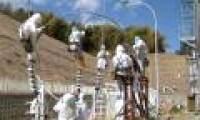

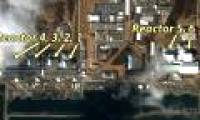


 NASA's 'Ninth Planet' Shows Signs of Being Friendly to Life
NASA's 'Ninth Planet' Shows Signs of Being Friendly to Life Why did American astronauts have to be quarantined when returning to Earth?
Why did American astronauts have to be quarantined when returning to Earth? China surprises the world by building a cable-stayed bridge 'above the clouds'
China surprises the world by building a cable-stayed bridge 'above the clouds' Why do women sleep less and wake up more than men?
Why do women sleep less and wake up more than men? Revealing the secret inside the stuffed animal claw machine, from there, summarizing experience to help you increase your winning rate many times over
Revealing the secret inside the stuffed animal claw machine, from there, summarizing experience to help you increase your winning rate many times over What would happen if you dug a hole through the Earth and jumped in?
What would happen if you dug a hole through the Earth and jumped in? Camera takes a photo that lasts 1,000 years
Camera takes a photo that lasts 1,000 years Was there nuclear war in ancient times?
Was there nuclear war in ancient times?